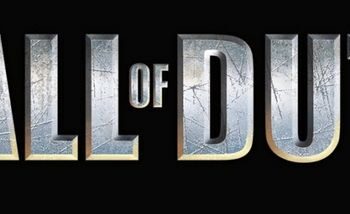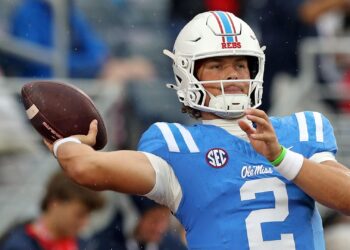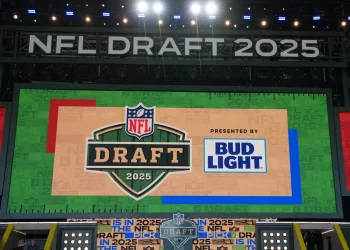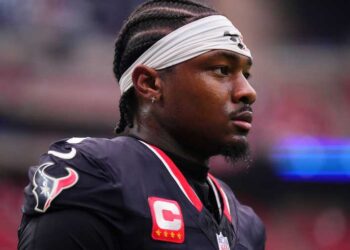By Bill Carroll
This is a month that means so much to me and the nearly 46.8 million people in the U.S. identity as Black. Carter G. Woodson fought to establish Negro History Week, in the second week of February, to coincide with the birthdays of Abraham Lincoln and Frederick Douglass., it was eventually expanded to Black History Month, in 1976. That is what inspired this article as February 2023 Is Our Special Black Football History Month.
I remember, in that same year, a proud subscriber to Ebony Jr!, back in its print magazine days, being exposed to stories of: Crispus Attucks, Benjamin Banneker, Salem Poor, Sojourner Truth, Martin Robison Delany, Frederick Douglass, Harriet Tubman, George Washington Carver, William Edward Burghardt Du Bois, James Weldon Johnson, Walter Francis White, Bayard Rustin, Madam C.J Walker, Bill “Bojangles” Robinson, Scott Joplin, Duke Ellington, Oscar Micheaux, Paul Robeson, Festus Claudius “Claude” McKay, Zora Neale Hurston, The Nicholas Brothers, Gordon Parks, Alvin Ailey Jr., Thurgood Marshall, Constance Baker Motley, Malcolm X, and Martin Luther King Jr.
However mixed in with all of the activists, artists, entertainers, and scholars were tales of the athletic feats of Jack Arthur Johnson, Joe Louis, James Cleveland “Jesse” Owens, Ralph Metcalfe, Jackie Roosevelt, Robinson, Althea Gibson, Arthur Ashe, Jim Brown, and Muhammad Ali. It was there, in a story about Paul Robeson, that I had first discovered that there had been Black players in pro football prior to the infamous “Brown Out” of 1934. [Which will be chronicled later.]
The Pioneers
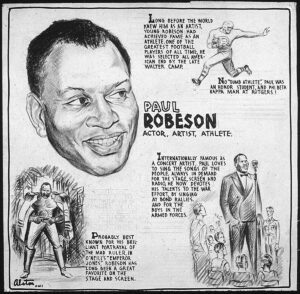
February Is Black Football History Month for me and it was while reading about Paul Robeson’s incredible career and life as a cultural polyglot, that I discovered he had played pro football, after being an All-American at Rutgers. He excelled in all areas as a debater, athlete, actor, scholar, and singer.
I learned that he and Fritz Pollard were friends and teammates on the 1922 Milwaukee Badgers. The team had three Black players, Hall of Famers Fritz Pollard and Duke Slater, as well as Paul Robeson. That would set the standard until the 1950’s. In 1946 Kenny Washington, and Woody Strode, re-integrated the NFL and the Browns of the AAFC signed Marion Motley, and Bill Willis.
The Forgotten
While books could be and have been written about Fritz Pollard and Paul Robeson, even a book about Duke Slater, sadly I have only found very little written about Robert Wells “Bobby’ Marshall. Bobby Marshall, in my opinion, deserves to be mentioned with Sol Butler, Bo Jackson, Jackie Robinson, Jim Thorpe, Dave Winfield, and Mildred Ella “Babe” Didrikson Zaharias, among the greatest all-around athletes in this nation’s history.
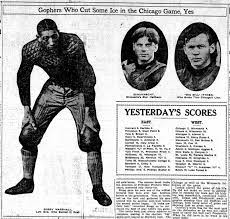
Born in the city of Milwaukee, Wisconsin on March 12, 1880, when he was only two-years-old his family moved to Minneapolis, Minnesota in 1882. He attended Madison Grammar school, while growing up on 18th Street. He played just about any sport you can imagine. He was introduced to football while playing with school friends on 16th street.
He played baseball, played basketball, boxed, raced bicycles, played football, played hockey, played tennis, and wrestled. He entered high school at Central High at almost six feet tall and about 160 pounds. by the time he was a senior and a budding legend, he was 6’1″ 180, his neighbor Sigmund Harris was the leader of their Central High football team and during their shared varsity years, they won all but one game.
He worked for a while to help support his family, in part, since his mother passed away February of 1900 when he was the age of 19. In 1903 he followed his former Central High quarterback, Sigmund Harris, to Minnesota and even they played one of Michigan’s juggernaut squads, under Fielding “Hurry Up” Yost to a six all tie. The Golden Gophers finished as champions of the Western [later the Big 10] conference.
The next season was even better. They were undefeated and, in a game versus Grinnell, they scored 146 points while shutting out the Pioneers. After coming up short in 1905, Minnesota was now in a battle versus Amos Alonzo Stagg’s University of Chicago Maroons, the 1905 conference titlists.
It was all decided November 10th, in the wind and rain and Marshall was instrumental, Several times he corralled the Maroons’ star, Walter Eckersall, tackling the quicksilver quarterback in the open field and he kicked the winning field goal in the sloppy conditions from 48 yards out.
Despite his accolades, after his 1907 graduation with a law degree, he struggled to establish himself in that world, but continued to excel in sports. He played on a championship baseball team in college and later played pro baseball, as well as semi-pro football and hockey, he was an assistant coach at his Alma Maters, Central High, and Minnesota. He made history when became the first Black high school football coach in the state and in 1909 he was hired at Parker College.
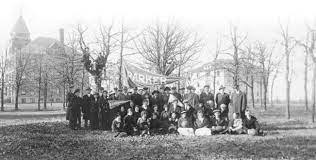
When that happened he became the first Black football coach at a predominantly White college. He had a law office in the Metropolitan Life building but clients were hard to find and a secretary refused to take notes for him, on top of that she said, “I don’t take orders from a ni__er.” It’s not hard to see why he moved more and more towards athletics.
He played on a very successful Negro Baseball club, the St. Paul Colored Gophers, which gave him the chance to play in the top level of the Negro Leagues with the Leland Giants, In the fall he lead the St. Paul Deans to three state, semi-professional, titles. In 1907 he started playing semi-pro hockey. If you remember the “Bo Knows” commercial, when Gretzky said, “Bo knows hockey!”
 The big difference here is that Bobby Marshall, really did know hockey. By 1911 he left the practice of law to take a steady income as a Minnesota state grain inspector. It was also a position that allowed him to still compete, but only on holidays and weekends. Now 6’2″ 195 he slowed a bit but was still strong and agile. He was still better than most.
The big difference here is that Bobby Marshall, really did know hockey. By 1911 he left the practice of law to take a steady income as a Minnesota state grain inspector. It was also a position that allowed him to still compete, but only on holidays and weekends. Now 6’2″ 195 he slowed a bit but was still strong and agile. He was still better than most.
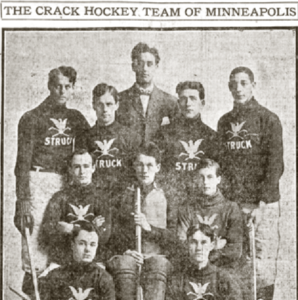
While it seemed that his days of playing at the highest levels of pro sports, but he joined Fritz Pollard as the first Black Players in the NFL, in it’s first seasons. September, 26, 1920, Marshall hopped a southbound train from the Twin Cities, to play both ways at end as the Rock Island (IL.) Independents smothered the 11 of the St. Paul Ideals, an independent pro team, 48-0 in the first game played in league history. On October 3rd Marshall and the Independents beat the Muncie Flyers 45-0 in one of the first two games between APFA teams.
Marshall and Pollard were the league’s only Black players that year. 11 more would play between 1921 and 1933 before the aforementioned “Brownout” kept Black players out of the league until 1946. Marshall didn’t play at the top level of pro football after 1925, but he kept competing. He played his last semipro football game at 56. He paid catcher for a recreational Grain Commission league baseball team, until the age of 60!
February 2023 Is Our Special Black Football History Month and we will be spotlighting other forgotten legends.
Works Cited:
Facebook. (n.d.). Facebook. Retrieved February 2, 2023, from https://www.facebook.com/LakewoodCemetery/posts/baseball-bobby-marshall-1880-1958-was-a-professional-baseball-player-the-first-b/2351275911757705/
Hoffbeck, S. R. (n.d.). Bobby Marshall Pioneering African American Athlete [Review of Bobby Marshall Pioneering African American Athlete]. MN History Magazine; MNhistorymagazine. Retrieved February 1, 2023, from http://collections.mnhs.org/mnhistorymagazine/articles/59/v59i04p158-174.pdf


 NFL
NFL
